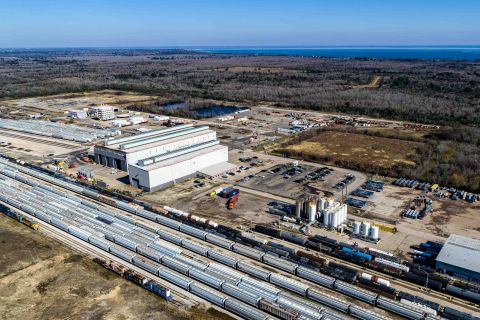In a bevy of quarterly earnings reports for the oilfield service companies, revenues were driven higher by shale oil/gas operations and deepwater development. It’s good news for service companies when growth in revenues is higher than the increase in the drilling rig count. As Halliburton noted, “North America revenue and operating income grew sequentially by 13% and 14%, respectively, compared to U.S. rig count growth of 6%. Operating income in North America exceeded $1 billion for the first time in our company’s history. The sequential improvements were primarily driven by strong activity in the Bakken, Eagle Ford and Permian Basin areas, along with the seasonal recovery in Canada.” Records were being set across the board for the service companies in the third quarter. FMC Technologies’ president and chief executive officer, John Gremp, stated, “The third quarter represented the largest subsea sales in our history. We anticipate an even larger fourth quarter as we establish a new high mark for annual subsea revenue. We continue to expect an expanding subsea market in 2012 as the deepwater market continues to strengthen and our customers remain committed to their long-term projects.” FMC also noted that its Energy Processing Systems had record revenue for the second consecutive quarter as the fluid-control business continued to benefit from the expansion of the North American pressure-pumping market. National Oilwell Varco reported the largest single order ever in the third quarter – a $1.5 billion order for seven drillship packages for a Brazilian company. In the conference call with analysts, Clay Williams, National Oilwell Varco chief financial officer, told analysts, “We believe shale drilling will continue to shape the company’s performance for many years to come.” Schlumberger’s performance in North America was driven by strong growth in liquids-rich shale basins in the U.S. along with increased deepwater work in the Gulf of Mexico. Weatherford’s income was boosted by increasing activity in North America and Latin America. Third quarter revenues of $3.37 billion were the highest in the company’s history. All of these results point to a very robust oilfield service industry, which is a boon to the exploration and production companies. A good percentage of these revenues will be reinvested in research and development of the next generation of technology needed to tap into even more hostile environments. Right now, the service companies are riding that wave of deepwater and shale plays. However, it would be prudent for these companies to be prepared for the next downturn. Why? The companies should prepare because the industry is cyclical. Having been in the industry for quite a few cycles, I have watched how the industry has changed. Just the names of the companies show what has happened in previous downturns. I can remember when National Oilwell Varco and Baker Hughes, for example, were separate companies. Even in these quarterly reports, consolidation is noted. Schlumberger is progressing with its integration of Smith. Halliburton reported higher activity for its Boots & Coots product service line. And, a downturn could come quickly. If Congress goes ahead with boosting revenues by taxing the oil industry or removing investment incentives, the need for oilfield services could evaporate quickly. Or, Iraq and Iran could flood world oil markets, driving prices even lower. Or, the Arab spring could spread to more oil-producing countries, decimating production. European financial crises could lead to a deeper worldwide recession. There are dozens of scenarios that could lead to a downturn. It will be interesting to see how well prepared the industry is to meet that challenge when, not if, a downturn occurs.
Recommended Reading
Verdagy Awarded $39.6MM DOE Grant for Electrolyzer Production
2024-03-14 - Verdagy will use the Department of Energy grant to accelerate the manufacture of e-dynamic electrolyzers for green hydrogen solutions.
Shell Taps Bloom Energy’s SOEC Technology for Clean Hydrogen Projects
2024-03-07 - Shell and Bloom Energy’s partnership will investigate decarbonization solutions with the goal of developing large-scale, solid oxide electrolyzer systems for use at Shell’s assets.
Plug Power Finalizes Contract with US Auto Manufacturer
2024-02-21 - Plug Power says it will supply hydrogen infrastructure and fuel cell solutions as part of the agreement.
John Cockerill Americas President Talks Hydrogen, Electrolyzers
2024-03-06 - Nicolas de Coignac, president of Americas for John Cockerill, recently spoke with Hart Energy about the company’s role in scaling electrolytic hydrogen in the U.S.
Energy Transition in Motion (Week of March 1, 2024)
2024-03-01 - Here is a look at some of this week’s renewable energy news, including Chevron’s plans for a solar-to-hydrogen facility in California.




